[English] 日本語
 Yorodumi
Yorodumi- PDB-2mj5: Structure of the UBA Domain of Human NBR1 in Complex with Ubiquitin -
+ Open data
Open data
- Basic information
Basic information
| Entry | Database: PDB / ID: 2mj5 | ||||||
|---|---|---|---|---|---|---|---|
| Title | Structure of the UBA Domain of Human NBR1 in Complex with Ubiquitin | ||||||
 Components Components |
| ||||||
 Keywords Keywords | PROTEIN BINDING / autophagy / protein degradation / ubiquitin binding | ||||||
| Function / homology |  Function and homology information Function and homology informationregulation of bone mineralization / phagophore assembly site / M band / mitogen-activated protein kinase binding / peroxisomal membrane / regulation of stress-activated MAPK cascade / negative regulation of osteoblast differentiation / Maturation of protein E / Maturation of protein E / ER Quality Control Compartment (ERQC) ...regulation of bone mineralization / phagophore assembly site / M band / mitogen-activated protein kinase binding / peroxisomal membrane / regulation of stress-activated MAPK cascade / negative regulation of osteoblast differentiation / Maturation of protein E / Maturation of protein E / ER Quality Control Compartment (ERQC) / Myoclonic epilepsy of Lafora / FLT3 signaling by CBL mutants / IRAK2 mediated activation of TAK1 complex / Prevention of phagosomal-lysosomal fusion / Alpha-protein kinase 1 signaling pathway / Glycogen synthesis / IRAK1 recruits IKK complex / IRAK1 recruits IKK complex upon TLR7/8 or 9 stimulation / Endosomal Sorting Complex Required For Transport (ESCRT) / Membrane binding and targetting of GAG proteins / Negative regulation of FLT3 / Regulation of TBK1, IKKε (IKBKE)-mediated activation of IRF3, IRF7 / PTK6 Regulates RTKs and Their Effectors AKT1 and DOK1 / Regulation of TBK1, IKKε-mediated activation of IRF3, IRF7 upon TLR3 ligation / Constitutive Signaling by NOTCH1 HD Domain Mutants / IRAK2 mediated activation of TAK1 complex upon TLR7/8 or 9 stimulation / NOTCH2 Activation and Transmission of Signal to the Nucleus / TICAM1,TRAF6-dependent induction of TAK1 complex / TICAM1-dependent activation of IRF3/IRF7 / APC/C:Cdc20 mediated degradation of Cyclin B / Downregulation of ERBB4 signaling / Regulation of FZD by ubiquitination / APC-Cdc20 mediated degradation of Nek2A / p75NTR recruits signalling complexes / InlA-mediated entry of Listeria monocytogenes into host cells / TRAF6 mediated IRF7 activation in TLR7/8 or 9 signaling / TRAF6-mediated induction of TAK1 complex within TLR4 complex / Regulation of pyruvate metabolism / NF-kB is activated and signals survival / autophagosome / Regulation of innate immune responses to cytosolic DNA / Pexophagy / Downregulation of ERBB2:ERBB3 signaling / NRIF signals cell death from the nucleus / Regulation of PTEN localization / VLDLR internalisation and degradation / Activated NOTCH1 Transmits Signal to the Nucleus / Regulation of BACH1 activity / Synthesis of active ubiquitin: roles of E1 and E2 enzymes / MAP3K8 (TPL2)-dependent MAPK1/3 activation / Translesion synthesis by REV1 / TICAM1, RIP1-mediated IKK complex recruitment / Translesion synthesis by POLK / InlB-mediated entry of Listeria monocytogenes into host cell / Activation of IRF3, IRF7 mediated by TBK1, IKKε (IKBKE) / JNK (c-Jun kinases) phosphorylation and activation mediated by activated human TAK1 / ubiquitin binding / Josephin domain DUBs / Downregulation of TGF-beta receptor signaling / Translesion synthesis by POLI / Gap-filling DNA repair synthesis and ligation in GG-NER / IKK complex recruitment mediated by RIP1 / Regulation of activated PAK-2p34 by proteasome mediated degradation / PINK1-PRKN Mediated Mitophagy / TGF-beta receptor signaling in EMT (epithelial to mesenchymal transition) / TNFR1-induced NF-kappa-B signaling pathway / Autodegradation of Cdh1 by Cdh1:APC/C / TCF dependent signaling in response to WNT / APC/C:Cdc20 mediated degradation of Securin / Regulation of NF-kappa B signaling / N-glycan trimming in the ER and Calnexin/Calreticulin cycle / Asymmetric localization of PCP proteins / activated TAK1 mediates p38 MAPK activation / Ubiquitin-dependent degradation of Cyclin D / SCF-beta-TrCP mediated degradation of Emi1 / NIK-->noncanonical NF-kB signaling / TNFR2 non-canonical NF-kB pathway / AUF1 (hnRNP D0) binds and destabilizes mRNA / Regulation of signaling by CBL / NOTCH3 Activation and Transmission of Signal to the Nucleus / Vpu mediated degradation of CD4 / Negative regulators of DDX58/IFIH1 signaling / macroautophagy / Assembly of the pre-replicative complex / Ubiquitin-Mediated Degradation of Phosphorylated Cdc25A / Negative regulation of FGFR3 signaling / Deactivation of the beta-catenin transactivating complex / Peroxisomal protein import / Fanconi Anemia Pathway / Degradation of DVL / Dectin-1 mediated noncanonical NF-kB signaling / Cdc20:Phospho-APC/C mediated degradation of Cyclin A / Negative regulation of FGFR2 signaling / Stabilization of p53 / Negative regulation of FGFR4 signaling / Downregulation of SMAD2/3:SMAD4 transcriptional activity / Negative regulation of FGFR1 signaling / Degradation of AXIN / Regulation of TNFR1 signaling / Hh mutants are degraded by ERAD Similarity search - Function | ||||||
| Biological species |  Homo sapiens (human) Homo sapiens (human) | ||||||
| Method | SOLUTION NMR / simulated annealing | ||||||
| Model details | lowest energy, model1 | ||||||
 Authors Authors | Walinda, E. / Morimoto, D. / Sugase, K. / Komatsu, M. / Tochio, H. / Shirakawa, M. | ||||||
 Citation Citation |  Journal: J.Biol.Chem. / Year: 2014 Journal: J.Biol.Chem. / Year: 2014Title: Solution structure of the ubiquitin-associated (UBA) domain of human autophagy receptor NBR1 and its interaction with ubiquitin and polyubiquitin. Authors: Walinda, E. / Morimoto, D. / Sugase, K. / Konuma, T. / Tochio, H. / Shirakawa, M. | ||||||
| History |
|
- Structure visualization
Structure visualization
| Structure viewer | Molecule:  Molmil Molmil Jmol/JSmol Jmol/JSmol |
|---|
- Downloads & links
Downloads & links
- Download
Download
| PDBx/mmCIF format |  2mj5.cif.gz 2mj5.cif.gz | 52.2 KB | Display |  PDBx/mmCIF format PDBx/mmCIF format |
|---|---|---|---|---|
| PDB format |  pdb2mj5.ent.gz pdb2mj5.ent.gz | 37.4 KB | Display |  PDB format PDB format |
| PDBx/mmJSON format |  2mj5.json.gz 2mj5.json.gz | Tree view |  PDBx/mmJSON format PDBx/mmJSON format | |
| Others |  Other downloads Other downloads |
-Validation report
| Summary document |  2mj5_validation.pdf.gz 2mj5_validation.pdf.gz | 431.9 KB | Display |  wwPDB validaton report wwPDB validaton report |
|---|---|---|---|---|
| Full document |  2mj5_full_validation.pdf.gz 2mj5_full_validation.pdf.gz | 432.9 KB | Display | |
| Data in XML |  2mj5_validation.xml.gz 2mj5_validation.xml.gz | 6.1 KB | Display | |
| Data in CIF |  2mj5_validation.cif.gz 2mj5_validation.cif.gz | 7.3 KB | Display | |
| Arichive directory |  https://data.pdbj.org/pub/pdb/validation_reports/mj/2mj5 https://data.pdbj.org/pub/pdb/validation_reports/mj/2mj5 ftp://data.pdbj.org/pub/pdb/validation_reports/mj/2mj5 ftp://data.pdbj.org/pub/pdb/validation_reports/mj/2mj5 | HTTPS FTP |
-Related structure data
- Links
Links
- Assembly
Assembly
| Deposited unit | 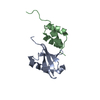
| |||||||||
|---|---|---|---|---|---|---|---|---|---|---|
| 1 |
| |||||||||
| NMR ensembles |
|
- Components
Components
| #1: Protein | Mass: 8576.831 Da / Num. of mol.: 1 / Fragment: UNP residuses 1-76 Source method: isolated from a genetically manipulated source Source: (gene. exp.)  Homo sapiens (human) / Gene: UBC / Production host: Homo sapiens (human) / Gene: UBC / Production host:  |
|---|---|
| #2: Protein | Mass: 5918.783 Da / Num. of mol.: 1 / Fragment: UNP residues 916-959 Source method: isolated from a genetically manipulated source Source: (gene. exp.)  Homo sapiens (human) / Gene: NBR1, 1A13B, KIAA0049, M17S2, MIG19 / Production host: Homo sapiens (human) / Gene: NBR1, 1A13B, KIAA0049, M17S2, MIG19 / Production host:  |
-Experimental details
-Experiment
| Experiment | Method: SOLUTION NMR Details: Structure of the UBA Domain of Human NBR1 in Complex with Ubiquitin | ||||||||||||||||||||||||||||||||||||||||||||||||||||||||||||
|---|---|---|---|---|---|---|---|---|---|---|---|---|---|---|---|---|---|---|---|---|---|---|---|---|---|---|---|---|---|---|---|---|---|---|---|---|---|---|---|---|---|---|---|---|---|---|---|---|---|---|---|---|---|---|---|---|---|---|---|---|---|
| NMR experiment |
|
- Sample preparation
Sample preparation
| Details |
| |||||||||||||||||||||||||||||||||||||||||||||||||||||||||||||||||||||||||||||||||||||||||||||||||||||||||||||||||||||||||||||||||||||||||||||||||||||||||||||
|---|---|---|---|---|---|---|---|---|---|---|---|---|---|---|---|---|---|---|---|---|---|---|---|---|---|---|---|---|---|---|---|---|---|---|---|---|---|---|---|---|---|---|---|---|---|---|---|---|---|---|---|---|---|---|---|---|---|---|---|---|---|---|---|---|---|---|---|---|---|---|---|---|---|---|---|---|---|---|---|---|---|---|---|---|---|---|---|---|---|---|---|---|---|---|---|---|---|---|---|---|---|---|---|---|---|---|---|---|---|---|---|---|---|---|---|---|---|---|---|---|---|---|---|---|---|---|---|---|---|---|---|---|---|---|---|---|---|---|---|---|---|---|---|---|---|---|---|---|---|---|---|---|---|---|---|---|---|---|
| Sample |
|
 Movie
Movie Controller
Controller



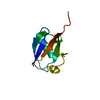
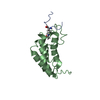
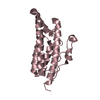
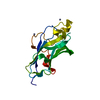
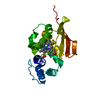
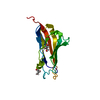


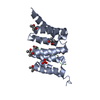


 PDBj
PDBj




















 HSQC
HSQC